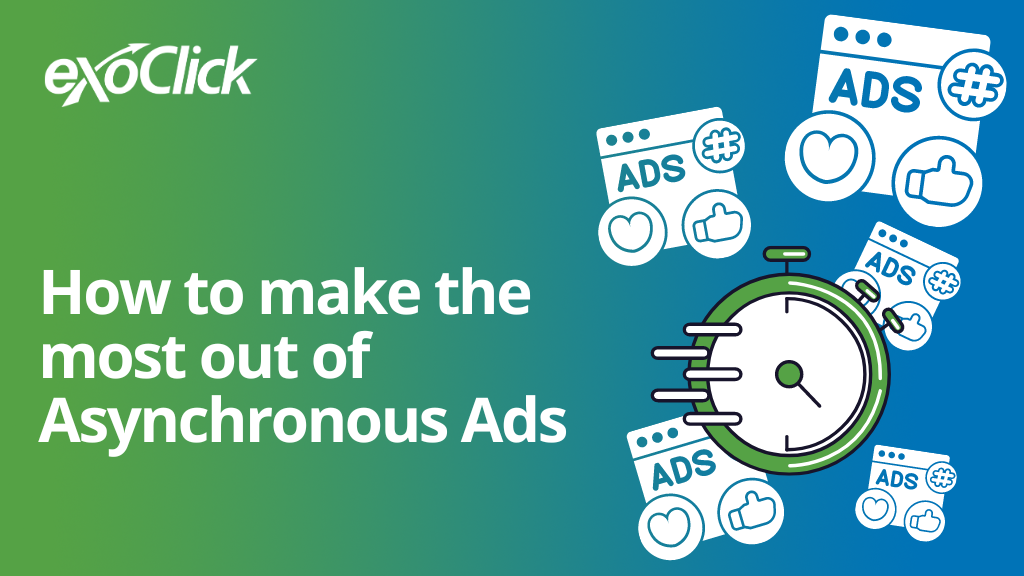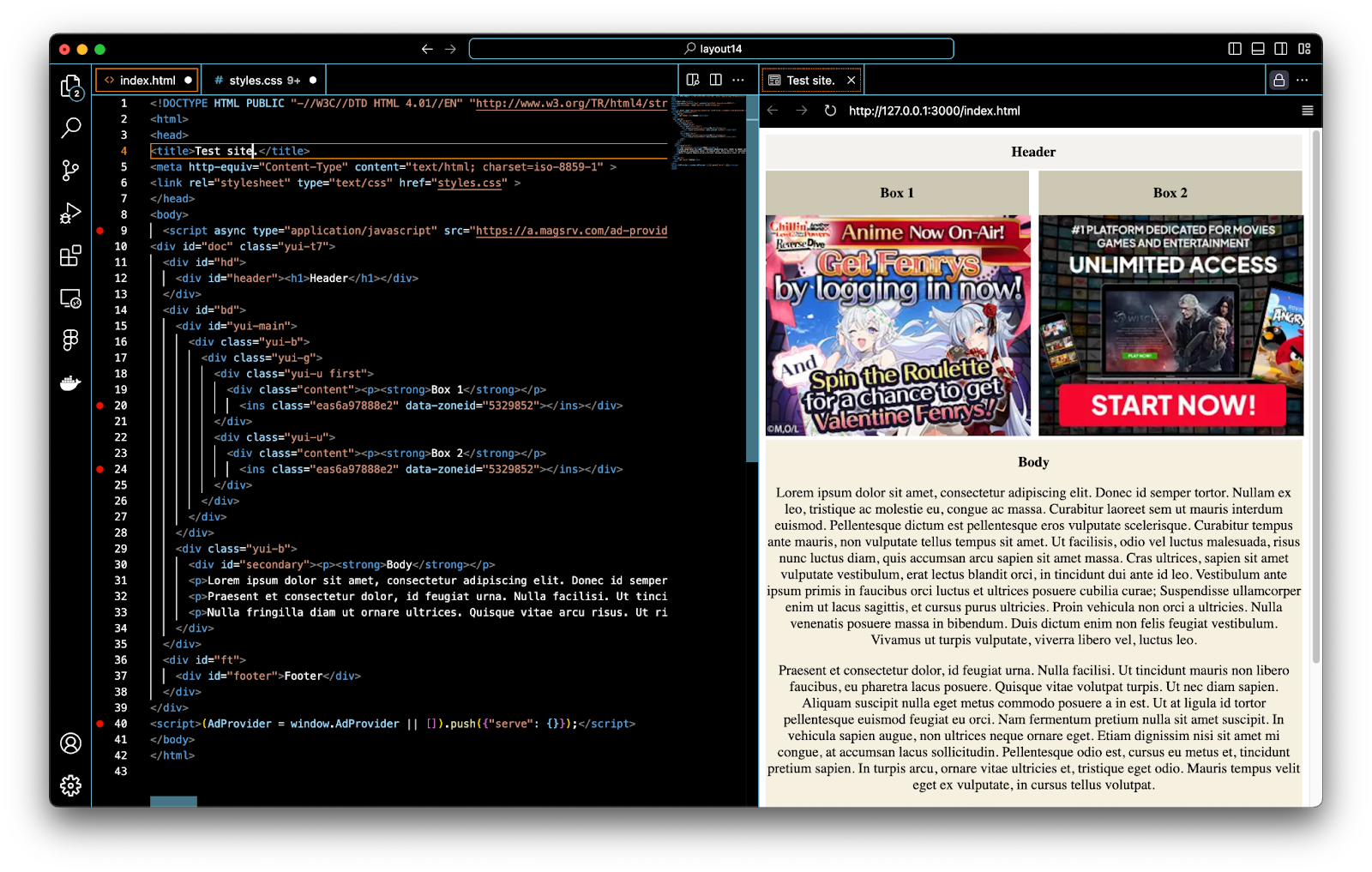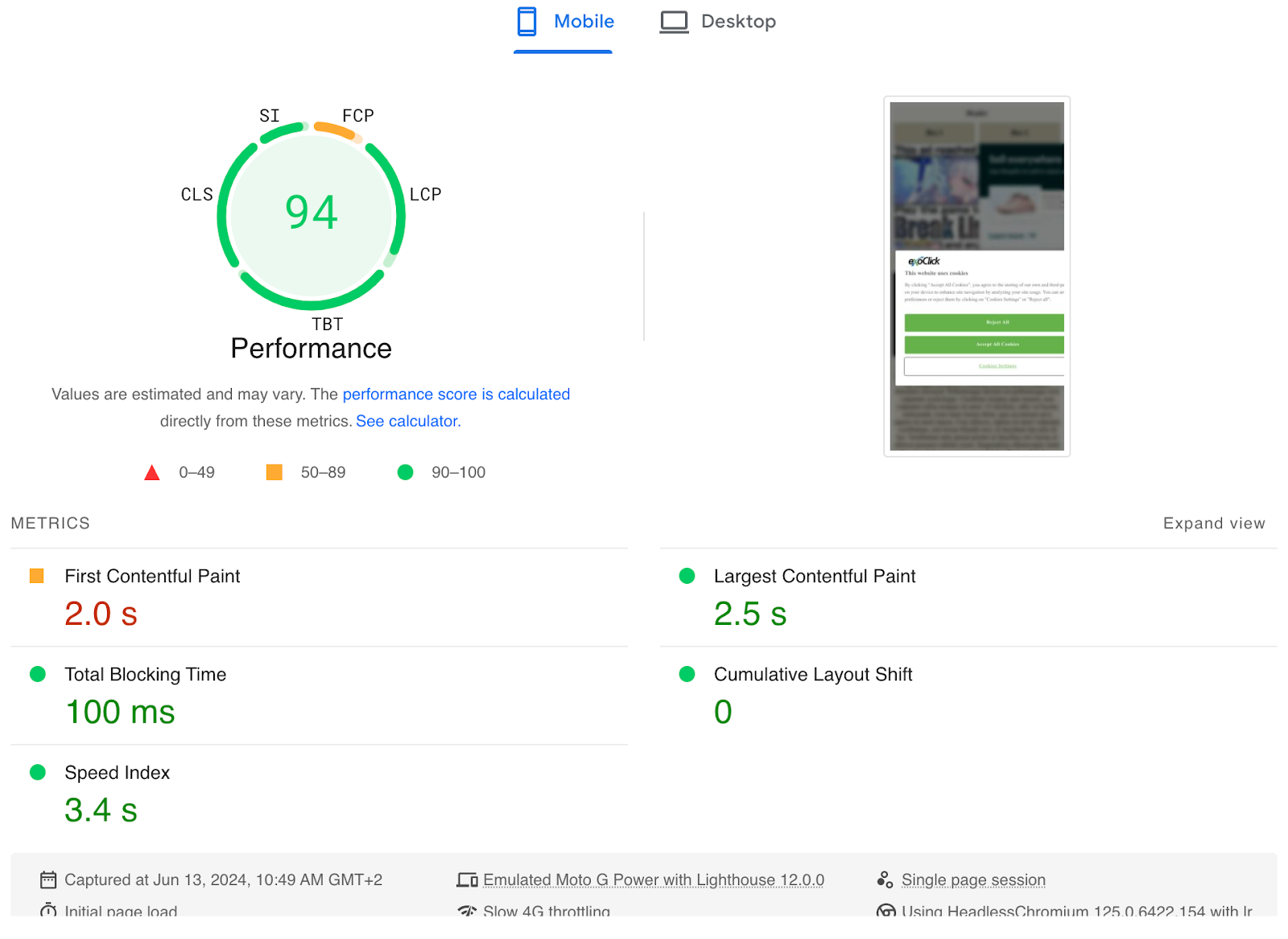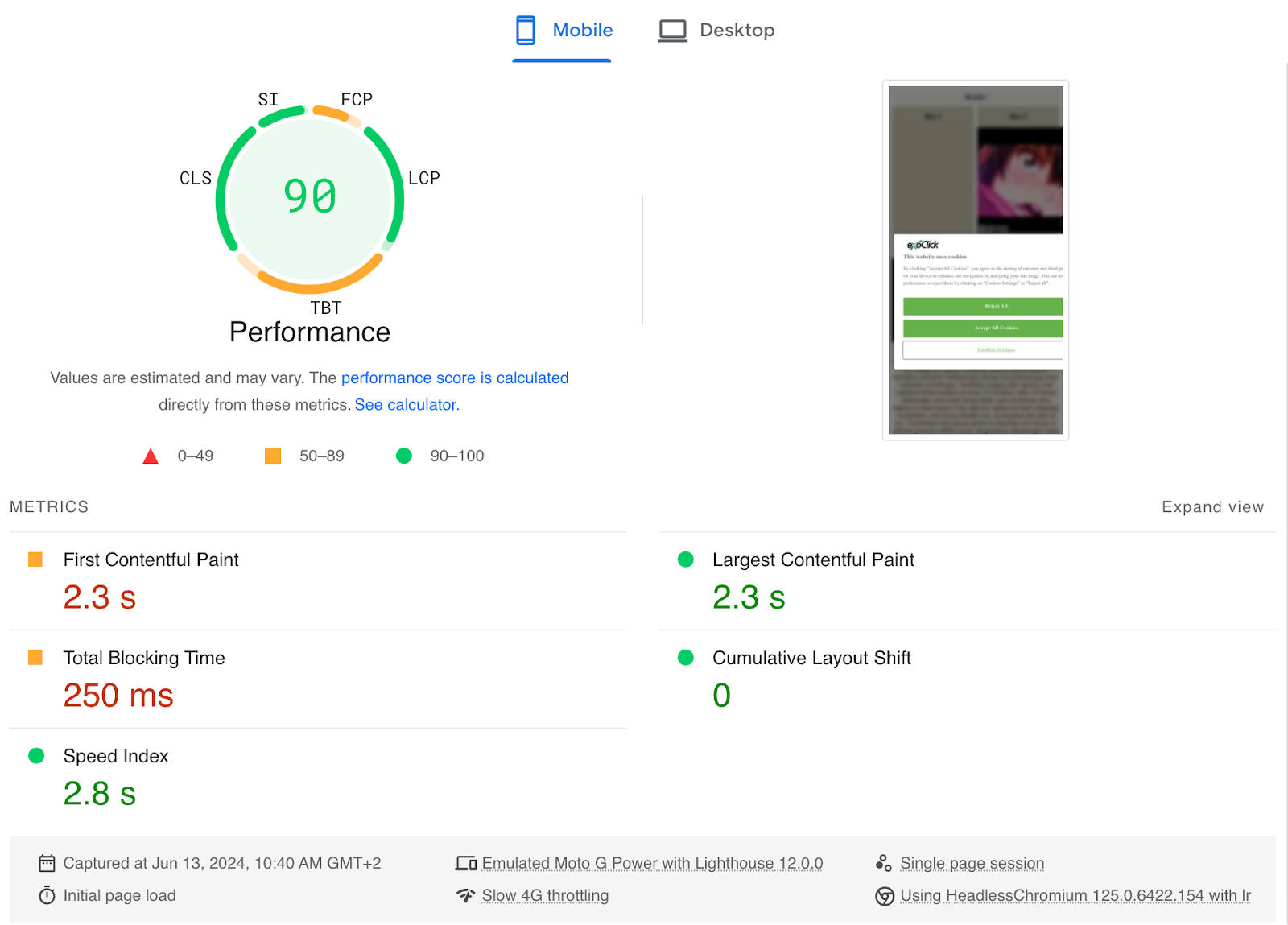How to make the most out of Asynchronous ads

Using ExoClick’s updated version of Async tags brings a series of performance benefits to your site and its ad zones. From allowing your content to load asynchronously, therefore quicker, and improving your Google rankings, all the way to enabling excellent ExoClick features such as Ad refresh and Responsive Display Ads. In this article we tell you what are the 7 main reasons why you should use Asynchronous ads and how to make the most of this useful ExoClick tool.
#1 Improve loading speeds and allow your ad zones to load at the same time as the rest of your content with Asynchronous ads
By default, the script tags on a website are render-blocking, which means that your end user’s browser won’t display your website’s content until the entire script has run. When the browser’s HTML parser comes across a piece of script, it downloads and executes it before moving on to the rest of the page’s script. This means that it could take a while for end users to see your content. If it takes too long for your website to load, they could lose their patience and click off.
By using ExoClick’s Asynchronous ads you avoid the slow loading times thus improving user performance by enabling your website to load asynchronously, which will noticeably increase performance when used on a well-optimized website. Asynchronous loading is a technique that allows certain resources on a web page, such as scripts or images, to be loaded in the background while the rest of the page continues to load. This means that these resources won’t block the rendering of the page and can speed up the overall page load time including ad content, also meaning that the ads on your ad zones will display better.
Async tags lead to a significant improvement in performance and of course, a better end user experience on your website, since content loads faster. Ad loading speed by using Asynchronous ad tags is:
- 2.5 times faster on desktop
- 2 times faster on mobile.
- Somewhat faster for iFrames.
You can enable Async tags on your ad zones from your sites & zones section in your Admin Panel. If you need help setting them up, contact your Account Manager.
#2 Serve multiple zones with a single request and customize their positioning
Once again related to performance improvement and usability, with Asynchronous ads you can serve multiple zones with a single request to get multiple ad zones on the same page. This is more efficient and will lead to a performance increase also!
Here’s how to do it: To use the Async script for multiple zones, copy the Asynchronous ad code onto your site, and repeat the middle section, the <ins> element, for each zone you wish to put on the page. Replace the data-zoneid with the id for these existing zones (e.g. 111, 222, 333):
<script async type=”application/javascript” src=”https://a.examplesite.com/ad-provider.js”></script>
<ins class=”adsbynetwork” data-zoneid=”111″></ins>
<ins class=”adsbynetwork” data-zoneid=”222″></ins>
<ins class=”adsbynetwork” data-zoneid=”333″></ins>
<ins class=”adsbynetwork” data-zoneid=”444″></ins>
<script>
(AdProvider = window.AdProvider || []).push({“serve”: {}});
</script>
Since your ad zones will only be one line of Asynchronous ad code you can customize them to appear wherever you want them, as you can see on the image below:

#3 Synchronous vs Asynchronous ads: Noticeably improve your Google rankings and Total Blocking Time with Asynchronous ads
Your website’s Google rankings are in big part based on performance. And, as you may already know, Google tends to rank down and even penalize or block poorly-optimized websites. Especially if these are riddled with obsolete code and contain heavy content and ads that load slowly, or don’t ever end up loading properly. So, the aforementioned content loading speed increases, which are triggered by adding Asynchronous ad tags, can also result in improved Google rankings for your business.
As an example of how you can improve Google rankings if you load ads asynchronously to improve website speed, below you can find a Synchronous vs Asynchronous ads comparison based on PageSpeed Insights performance results on a website with Asynchronous ads, compared to the speed results on a website which hasn’t got Async tags on its ad zones:
Synchronous vs Asynchronous ads: PageSpeed Insights performance results on a website with Asynchronous ads

Synchronous vs Asynchronous ads: PageSpeed insights performance results on a site without Asynchronous ad tags on its ad zones

As you can see, the total blocking time on the website with Asynchronous ad tags installed is 100 MS, whereas the blocking time on the website without Async tags is 250MS, which is 150MS higher! Which makes a huge difference on your Google rankings.
A great Google ranking for your website is paramount to the success of your online business, because your business only gets found by your target audience if it appears in the search results. The higher your website ranks on Google’s search results, the more quality traffic to reach your business, which of course leads to increased revenues! It is also important to note that a favorable Google ranking leads to increased authenticity and credibility for your business, since website visitors tend to think that the first few sites on the top search engine results are the most reliable ones.
#4 Attract contextual Advertisers to your website with Keyword targeting and Sub IDs
By using Asynchronous ads, you can also add in keywords for better categorization of your content to attract contextual Advertisers to target your ad zones, and/or use Sub IDs for better segmentation of your traffic. Many Advertisers use keyword targeting when they set up their campaigns to help them find ad zones that display similar content to the theme and vertical of their offer, to make their ads fit more contextually into your website.
This is great for your website revenues, since if an end user sees an ad for an offer that is related to content they have searched for on your website, they are more likely to click on the ad, bringing more qualified clicks for the Advertiser and bringing you a higher CTR for that ad zone. For example, say you have a piece of video content that shows a couple going out for a date, you could add the keyword ‘Dating’ to the video ad zone, this will attract Advertisers with Dating offers to bid for your ad zone. Now Dating Advertisers will be more likely to bid for your ad zone, which will create more competition, increasing your eCPM values and the long-term value of your ad zone.
You can manually insert keywords as ‘tags’ for your ad zone, which is explained in our Documentation pages. Or you can also automate the process of KW extraction from Meta tags.
#5 You can enable Ad Refresh on your ad zones
Only by using Asynchronous ad code and Asynchronous ads can you enable Ad Refresh, a Publisher feature which allows you to refresh ad content on various Banner ad zones, including RDAs, on your website, in order to serve not one, but several ads per user, per session. In order to refresh, an ad zone needs to be directly viewed by an end user in real-time, which promotes high viewability rates. As a Publisher you have full flexibility to choose the refresh frequency for ad zones. There are 4 time settings:
#1 30 secs: The ads will refresh every 30 seconds
#2 60 secs: The ads will refresh every 60 seconds
#3 90 secs: The ads will refresh every 90 seconds
#4 120 secs: The ads will refresh every 120 seconds
There is a limit of 10 rotations per user session, meaning that you are not at risk of damaging your eCPMs because of a too constant ad rotation, keeping your website industry compliant.
Using Ad Refresh comes with several benefits for you as a Publisher:
- You are making more of your inventory available to Advertisers buying viewable impressions through ExoClick.
- Increase quality impressions and revenues per ad zone on your website.
- You are optimizing end user time on the page showing them more than 1 ad per session.
- You offer your end user a better user experience and reduce ad fatigue by avoiding showing them always the same ad.
- This feature has been specially designed to be fully compliant with the IAB Standards. Here’s how to keep your website industry compliant!
- Ad Refresh operates according to the Ad Best Practices recommended by Google’s viewability logic.
#6 Enable Responsive Display Ads on your Banner, FPI, Instant Message and Sticky Banner zones
Another highly compelling reason as to why you should use Asynchronous ad tags on your website is because by doing so you can enable Responsive Display Ads on your Banner, Instant Message and Fullpage Interstitial zones. When you enable RDAs on your ad zones, Advertisers can upload images (300x300px) and texts (title, description and brand) for a campaign, and ExoClick’s system will automatically create several different sized ad creatives that you can instantly use in a campaign. Here are the main benefits:
- Attract more Advertisers to bid on your ad zones and increase demand.
- How to keep your website industry compliant? RDAs are aligned with the IAB industry Standards and Google.
- A great end user experience, hence qualified clicks, therefore higher eCPMs.
- Easy setup, because RDAs are set up by default on your ad zones. However you can toggle this off if you wish.
You can easily enable RDA Asynchronous ads on your ad zones through your admin panel.
#7 Receive additional details on ad serving for all your debugging purposes with Asynchronous ads
The Async script is more transparent in regards to how the ad serving call is made. If you are analyzing the processes happening on your website and you want to debug the ad serving calls done by the async script, you can find some additional details on your Asynchronous ads when using Inspect Elements. Here is how:
1. When you open the Console tab, you can see which <ins> calls have been registered by the ad-provider script as well as which Sub IDs and keywords you are sending:

2. When you open the Network tab, you can inspect the “api.php” call to find out which requests are made to ExoClick’s ad server and what you are getting in the response:

Do you need help setting up your Asynchronous ads? Or want more tips on how to speed up ad loading time and to improve Google rankings with Async and attract contextual Advertisers? Then make sure to get in touch with out team here!
Elevate your Online Advertising skills! Join ExoClick Academy, our free online learning hub. With concise video courses from Basic, Intermediate, and Expert courses designed for Publishers and Advertisers. You will learn how to maximize your knowledge and skills using ExoClick’s excellent platform features. Once you complete each course you will receive an official certificate of completion! Start your journey for online advertising success today! Sign up for free now!